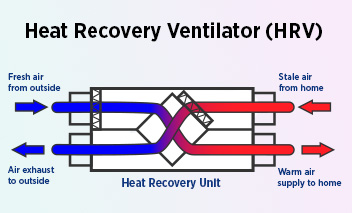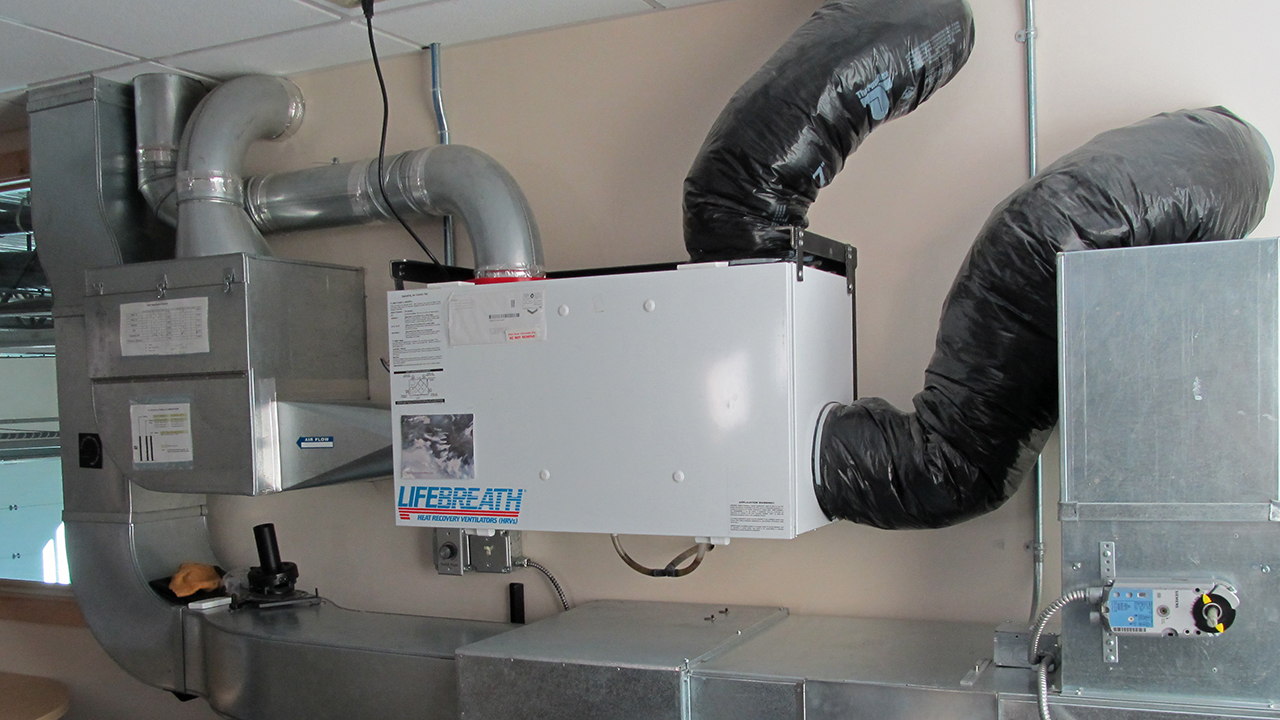A Simple Guide to HRV Upkeep
The All-Inclusive Overview to the Uses of Heat Recovery Ventilation in Modern Buildings
Heat Recovery Ventilation (HRV) systems stand for a substantial improvement in constructing innovation (HRV Heat Recovery Ventilation). They supply an approach for exchanging stagnant interior air with fresh outside air while lessening energy loss. This technique not just enhances interior air high quality however also adds to energy efficiency in both domestic and commercial structures. Understanding the various applications and benefits of HRV can reveal its crucial duty in modern style and sustainability efforts. The ramifications of this technology are worth discovering even more
Recognizing Heat Recovery Ventilation Solutions

Lots of contemporary buildings prioritize power efficiency, comprehending heat recuperation air flow (HRV) systems is important for optimizing indoor air top quality and decreasing energy consumption. HRV systems function by moving heat from stagnant interior air to inbound fresh air, efficiently preserving comfortable indoor temperatures while minimizing energy loss. These systems are composed of a heat exchanger, followers, and ductwork that help with the blood circulation of air. Throughout winter months, HRV devices capture and reuse warmth from the outbound air, while in summer season, they can help cool incoming air. By continuously trading air, HRV systems also reduce humidity and the focus of interior toxins. Proper installation and maintenance of HRV systems are important for their effectiveness and efficiency in boosting total building performance and comfort.
Advantages of Heat Recovery Ventilation
Heat recovery ventilation systems offer many benefits that enhance both energy performance and indoor air quality in modern buildings. By catching and recycling energy from exhaust air, these systems substantially minimize heating and cooling expenses, leading to lower energy consumption. Additionally, they maintain a steady circulation of fresh outside air, lessening the threat of interior air toxins and irritants. This continual exchange aids regulate humidity levels, stopping mold and mildew development and guaranteeing a healthier living atmosphere. Furthermore, HRV systems add to sustainability objectives by reducing overall carbon footprints. Their capacity to optimize air flow without giving up thermal comfort makes them a beneficial addition to modern building layout, promoting both financial and environmental advantages.
Applications of HRV in Residential Buildings
As house owners progressively focus on power efficiency and indoor air top quality, the applications of warm recovery air flow (HRV) systems in domestic structures have ended up being a lot more common. HRV systems are especially helpful in firmly secured homes, where preserving fresh air blood circulation is crucial for protecting against wetness accumulation and interior toxins. They successfully transfer warm from outbound stale air to inbound fresh air, reducing power expenses associated with cooling and heating. Additionally, HRVs can boost comfort degrees by controling moisture and temperature level. They are likewise versatile for various property layouts, including single-family homes and multi-unit structures. In general, incorporating HRV systems supports sustainable living methods while guaranteeing a much healthier indoor atmosphere for owners.
HRV in Business and Industrial Setups
In commercial and commercial setups, the implementation of warmth healing ventilation (HRV) systems has come to be progressively essential for optimizing energy performance and keeping air top quality. These systems effectively transfer warm from exhaust air to incoming fresh air, minimizing the requirement for extra home heating or air conditioning. This not just reduces power prices however additionally adds to sustainability campaigns. Industries such as manufacturing, warehousing, and office structures profit considerably from HRV systems, as they aid manage temperature level and moisture levels, making certain a comfortable and efficient environment. Additionally, HRV systems help in eliminating contaminants and excess dampness, enhancing indoor air top quality. As policies around air quality become more stringent, the fostering of HRV technology is Clicking Here likely to grow, making it a vital component of contemporary industrial and commercial facilities.
Future Fads in Heat Recovery Ventilation Modern Technology

Often Asked Concerns
Exactly How Does Heat Recovery Ventilation Impact Indoor Air High Quality?
Heat recovery ventilation considerably enhances interior air top quality by continually exchanging stale indoor air with fresh outdoor air while recovering power. This procedure lowers toxins, preserves perfect humidity degrees, Learn More Here and assures a healthier environment for passengers.
Can HRV Solutions Be Installed in Existing Structures?
HRV systems can without a doubt be mounted in existing buildings. Retrofitting may call for adjustments to ductwork and air flow designs, but it significantly improves power effectiveness and indoor air quality, making it a viable alternative for older frameworks.
What Upkeep Is Required for HRV Equipments?

Are There Specific Climates Where HRV Is Much More Reliable?
Heat recovery ventilation systems are specifically reliable in climates with substantial temperature level differences in between seasons. These systems enhance energy performance by recuperating warm from exhaust air, making them perfect for both cool and moderately warm settings.
How Do HRV Systems Affect Power Costs?
